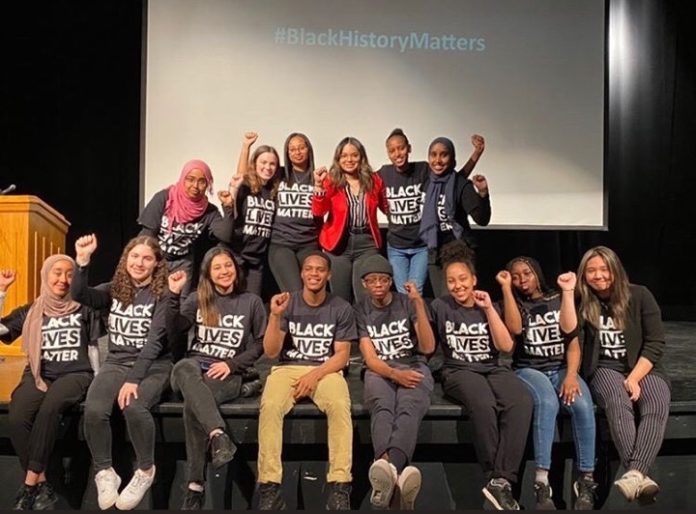By Dina Efrem
My name is Dina Efrem, and I am overjoyed to be one of the student columnists from Nepean High School (NHS), contributing to Kitchissippi Times.
In my final year at NHS, I am fortunate enough to be co-chair of our Diverse Student Union and co-editor of our school newspaper, Knightwatch. Throughout my journey at NHS, I have focused on the progression of racial diversity and inclusivity, and I hope to inform the readers of Kitchissippi Times about our efforts.
When looking at NHS as a whole, many things quickly become apparent to you as a racialized student. NHS is predominantly white, with a socio-economic spectrum ranging from middle class to upper middle class. Evidently, there is a large gap in the ratio of racialized to non-racialized students. These are all important factors in considering a school’s racial diversity.
Diversity and representation are essential in the academic success of racialized students. Racial diversity within a school benefits not only racialized students, but also those that belong to the non-racialized group. Diversity allows students to navigate a space that offers a vast array of cultures, beliefs, opinions and ideologies. It teaches students how to agree, or disagree, with their peers, while respecting their beliefs that might be determined by their background and upbringing. If the importance of diversity and inclusion is stressed during high school, young adults will be better set up for the future, in the hope of creating a peacefully coexisting society.
Although as students we cannot control representation in terms of staff and administrators, we can still work towards our school’s racial inclusivity. Exceedingly, when we observe the world’s current political climate, we can see how quickly hate and division can spread. Education is key, as it curbs ignorance and cultivates compassion and empathy. When students are exposed to the fundamentals regarding racial sensitivity and acceptance, you are instilling in them the right morals and ethics. The first step to racial inclusivity is acknowledging the racial bias within your school, because denial is a part of systemic racism. School is supposed to be one’s safe space, where everyone is seen equally: a place where marginalized voices are empowered. Unfortunately, this is not always the case.
NHS as a whole is not racist, but both the administration that leads the school, and the student population, need to confront racial bias and the need for racial diversity. It commences with white teachers who neglect to address white student’s discriminatory comments and actions. As a racialized student in a predominantly white school, with an administration that has previously refused to take non-performative action, you find yourself feeling like an outsider trying to navigate the white space alone. Racial exclusion also leads to the self-segregation of minorities. This is a topic I approached in my Grade 11 Anthropology summative assignment with the research question, “Do minorities tend to self-segregate?” I researched visual observations and conducted surveys with staff and students. The majority of staff believed that minorities do tend to self-segregate in the classroom and that there are barriers that stand in the way of students’ learning due to their racial background.
Similarly, the vast majority of students believed that minorities did, in fact, self-segregate and rated NHS’ racial diversity a 1-3 out of 10. From this, we can conclude that both the staff and students are aware of the racial divide in their school, which is a significant advancement. Self-segregation of minorities stems from the environment of the school. If students feel as though they do not belong, it is human nature to surround themselves with those they identify with racially. If you grew up in a predominantly white area, you will most likely hang out with other people within your neighbourhood, or others who resemble and mirror your appearance. You become less inclined to understand minorities, their struggles and ways of life unless there are active interventions by the leaders of the school and society.
Changes at NHS start with the people who make up our school community. Once people acknowledge the conscious, or unconscious, racial bias they hold, and once people reflect amongst themselves, their friend groups, their co-workers and the school board, change is attainable. Without the cooperation of the community as a whole, change is unachievable. My time at NHS has included various challenges, but also many successes. I continue to push myself and work with many students dedicated to the amelioration of racial diversity at our school. Where there is unity, there is victory — I am hopeful for NHS’ future!
